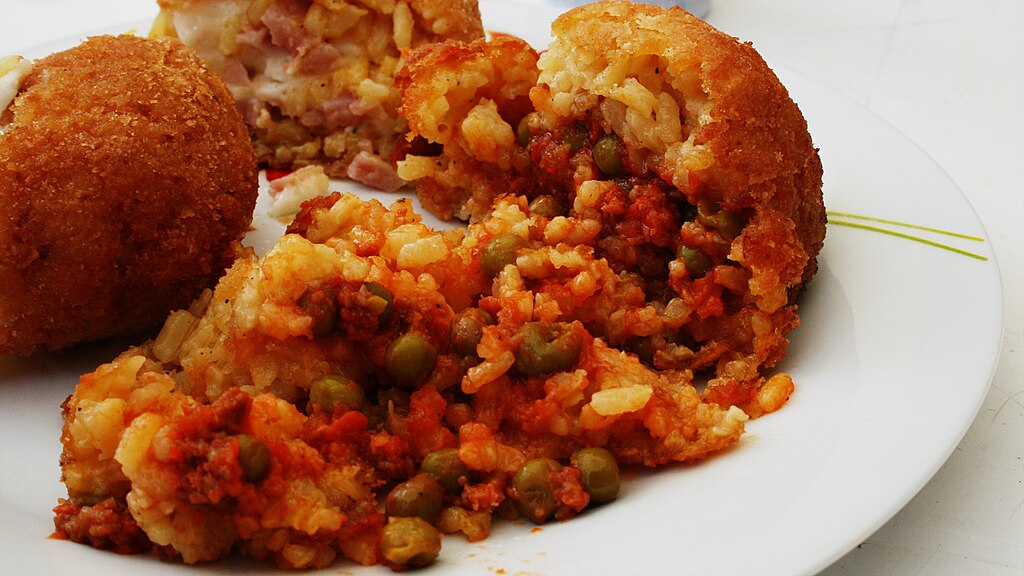There’s no two ways about it: Sicily’s culinary scene plays a huge role in the island’s ever-increasing popularity. Ask any local what the top thing to do in Sicily is, and I can safely bet most of them will tell you it’s simply to eat.
While it’s difficult for us natives to be impartial, I don’t think I’m the only Italian who believes Sicilian food is in a league of its own. Hearty pasta alla norma, indulgent cannoli, and crispy panelle, anyone?
I could gush about the food in Sicily for days, but to spare you the time, I’ve narrowed down my favorite eats into one comprehensive guide that will have your tummy rumbling until you touch down!
Arancini
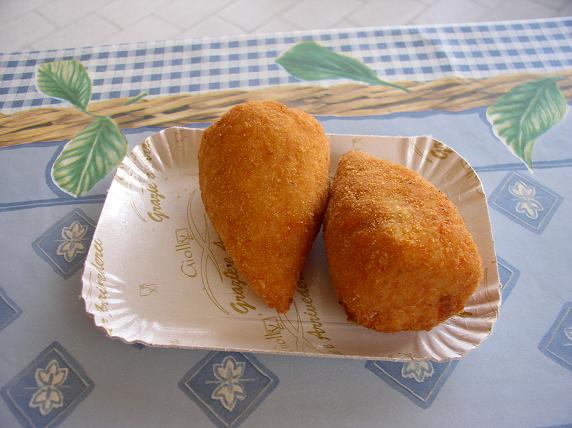
Even if you’ve heard very little about Sicilian cuisine, I’m willing to bet you’re familiar with the sensational deep-fried balls called arancini. They might just be Sicily’s most famous export, and I’ve spotted them appearing on menus in various corners of the world.
These delectable snacks have become synonymous with the island. They consist of arborio rice molded into a ball and combined with various fillings, such as mozzarella, ragu, or vegetables. A breadcrumb and parmesan outer layer keeps the mix in place.
Though there’s some uncertainty about how arancini came to be, it’s widely believed that they developed after Arab forces introduced rice to Sicily in the 10th century. Western Sicily is thought to be the birthplace of these savory delights, but others argue they hail from the east coast.
Arancini is typically served as an appetizer or as finger food. However, I regularly find myself enjoying them as an on-the-go snack when I’m craving something satisfying. Crunchy on the outside and rich and gooey on the inside, I could eat arancini daily and never tire of it.
If you’ve ever wondered what food Sicily is famous for above anything else, this is it.
Arancini cooking class in Catania
Are you looking for an exclusive and Instagrammable experience in Sicily? Attend a cooking class in Sicily to learn how to prepare the true Arancini!
A professional cook will teach you the original recipe and you’ll get the chance to cook Arancini in a real laboratory! If you want to live an experience to remember, I would 100% suggest to give it a try.
Cannoli

If arancini is Sicily’s most recognizable culinary invention, cannoli has to be second. These tube-shaped bites are up there with tiramisu and panna cotta as Italy’s most sought-after desserts.
I’ve been a sucker for cannoli for as long as I can remember, yet the mixture of creamy ricotta cheese wrapped in crispy fried dough is as dreamy as ever.
Much like most specialty foods in Sicily, cannoli has undergone plenty of changes over the years. While the traditional recipe is still a much-loved option, pistachio, chocolate, and lemon alternatives are becoming as popular.
Cannoli has existed since the 9th century. According to legend, the women of Caltanissetta in central Sicily whipped up these sugary treats to impress their princes.
While some restaurants serve up pretty stellar cannoli, enjoy it as we Sicilians do and pick up yours from a pastry shop.
When it comes to street food in Sicily, cannoli is as good as it gets!
Pasta Alla Norma
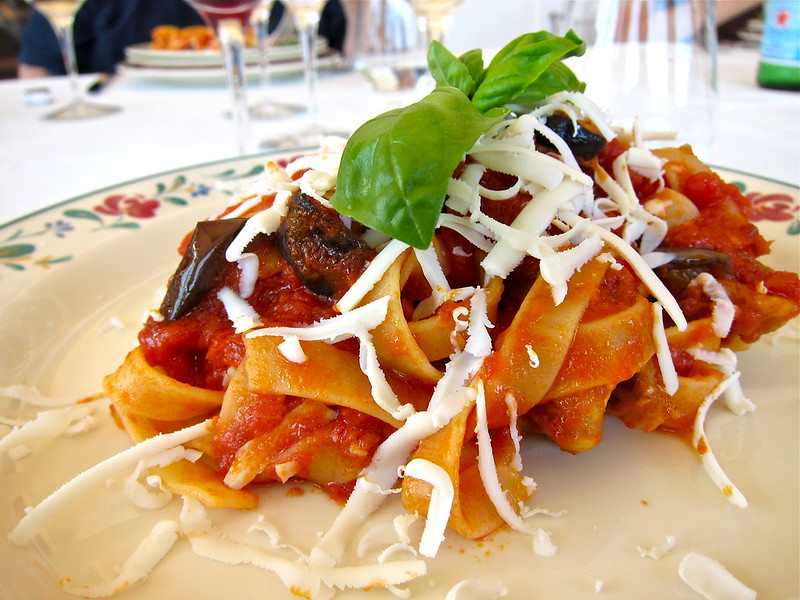
Moving onto something a little more substantial, this time, we’re looking at pasta alla norma. A staple of Catanian cuisine, this veggie-packed concoction proves that the simplest dishes are often the best.
Just a handful of ingredients are included, namely fried eggplant, tomatoes, salted ricotta, and basil. Light enough to enjoy in the summer but nourishing enough to warm you up during the winter, there’s a reason pasta alla norma is such a beloved food among us locals.
This dish perfectly encapsulates the evolution of the island’s cuisine. Arab influence brought eggplants, tomatoes arrived during the 16th century, basil grew throughout Sicily, and ricotta resulted from dairy farming. Catania composer Catania Vincenzo Bellini’s opera Norma inspired the name.
If you’re wondering what to eat at dinnertime, pasta alla norma is one of my go-to classic dishes. That being said, I think it’s even more flavorsome alongside a glass of Nero d’Avola, a fruity Sicilian red. I guarantee you’ll love how the wine’s acidity complements the zesty tomato sauce and mild eggplant as much as I do.
Caponata

When I was growing up, if you had asked me what is the most popular food in Sicily, I would have probably said caponata. It’s a blend of fresh vegetables and agrodolce sauce, which has been a firm favorite in my family for as long as I can remember.
Caponata is essentially a mix of eggplant, tomatoes, capers, olives, onions, and celery. These ingredients are chopped, cooked, and coupled with a vinegar and sugar-infused sauce. It’s salty, sour, and sweet all at once and quintessentially Sicilian.
Yet another nod to the island’s history under Arab control, caponata came about when traders introduced new produce to Sicily. It was only later in life that I learned the origins of caponata, which is actually a variant of a word used to describe a lampuga fish.
Upper-class Sicilians would enjoy the sweet and sour sauce with lampuga, while their poorer counterparts did so with vegetables.
The best thing about caponata? There are endless ways to serve it! Like most Sicilians, I’ve tucked into caponata hot, cold, as a side dish, with fish, alongside pasta, and just about any way you can imagine.
I recommend pairing it with some crusty bread, especially if you’re trying it for the first time; it’s always nice to have something to dip in.
Panelle
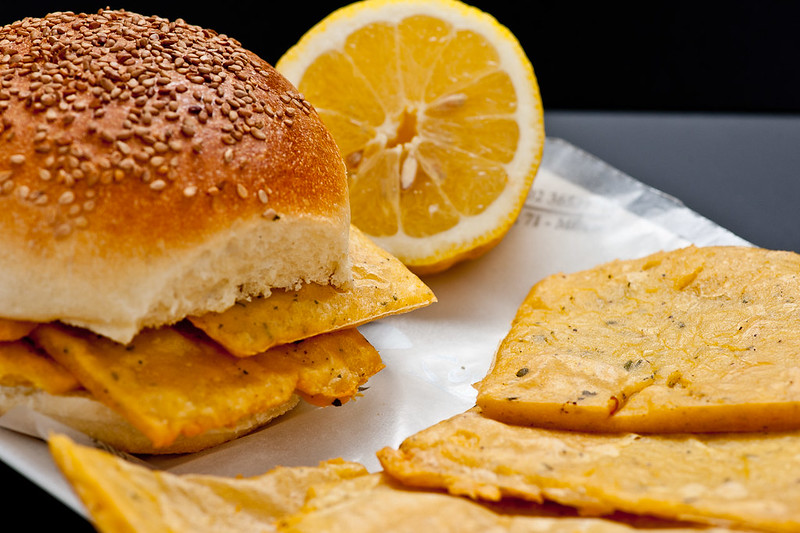
Nothing says Sicilian street food like panelle. While the idea of chickpea flour fritters may not sound exceptionally flavorful, I can assure you that panelle is among the finest snacks on the island.
Naturally, chickpea flour is the primary ingredient. It’s combined with just a few other components, notably salt, parsley, and olive oil, and deep-fried to achieve its beautifully nutty taste.
The story of panelle dates back to the 9th century. At the time, Arab forces in Palermo began grinding chickpeas into flour. As the elements used to make panelle were rather inexpensive, it became a hit with both wealthy and impoverished Sicilians.
These days, most of us prefer to sandwich our panelle in the middle of a freshly baked bread roll with a dash of salt and pepper.You won’t need to wander too far to stumble upon these scrumptious Sicilian-style snacks, as dozens of panelle stands are scattered throughout Palermo.
Plan a real Street Food experience in Palermo
You cannot plan a trip to Palermo without tasting the true Sicilian street food. If you’re looking for group experiences to meet new people and eat our delicacies, here are some of my favorites.
Pasta Con Le Sarde

Many of the traditional foods of Sicily center around seafood, but few fish-based dishes are as acclaimed as pasta con le sarde. This is one of those culinary creations that I think everyone needs to try at least once during a trip to Sicily.
As you may have guessed from the name, this dish primarily consists of sardines and pasta, specifically spaghetti. To elevate these mild-flavored ingredients, saffron, fennel, raisins, and pine nuts are added. These provide the dish with a glorious mixture of earthy and sweet tones and chewy, crunchy textures.
Pasta con le sarde is originally from Syracuse in the east, but Palermo has become the island’s go-to city for this revered dish, like many others because it’s known for having the best food in Sicily.
During the Middle Ages, locals used basic, readily available ingredients to whip up the original pasta con le sarde. Centuries later, as more varied produce arrived in Sicily, the likes of pine nuts were added.
I can say with some confidence that almost every second restaurant in Sicily has this dish on its menu, but no one does it quite like the Palermitani.
Brioche Con Gelato (Ice Cream)
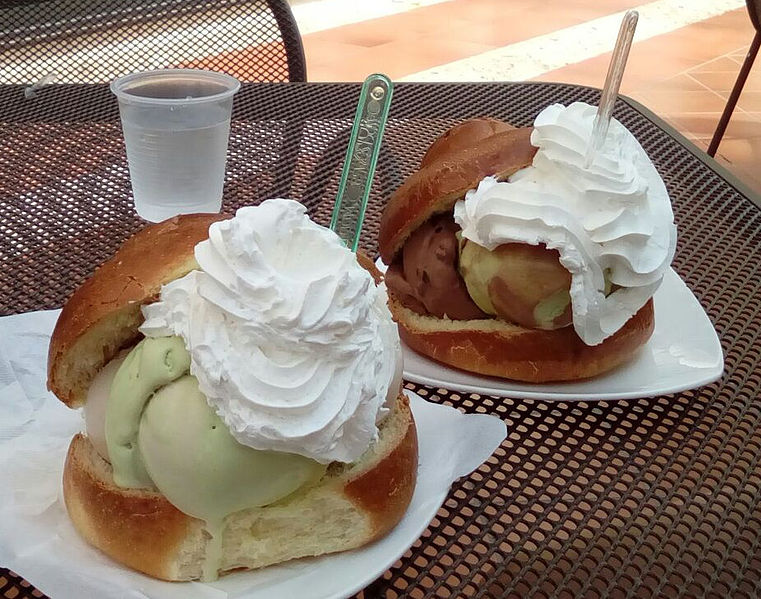
We Sicilians share a love of dessert-like breakfasts with the rest of Italy, and brioche con gelato is usually our first choice. As you can probably tell, this is made of brioche bread stuffed with thick, honey-like gelato.
While it may sound straightforward, baking the bread to the correct fluffy consistency and the gelato to the proper thickness is necessary to get this breakfast just right. The gelato flavor you pick is totally up to your personal preference, but I’m especially fond of the buttery hazelnut variety.
Brioche con gelato is one of Sicily’s newer typical foods. Gelato was born in Florence, mainland Italy, in the 16th century, while brioche spread from France several hundred years later.
The timeframe for this winning combination is still quite unclear, but it’s been a favored breakfast for a whole host of Siclians for decades now.
When plated correctly, the brioche should be slightly warm enough to melt the gelato slowly. At the same time, the ice cream should begin to soften the bread with each bite you take. Some choose to eat it with a spoon, but I prefer to dive right in and eat it like any other sandwich!
BONUS: Explore the
Now you know some of the main traditional Sicilian foods, but you know what’s even better? Pairing these delights with a glass of wine!
Read our Guide to the Best Wine Tours in Sicily to uncover the most charming vineyards, enjoy insider tips, and craft unforgettable memories with our curated experiences and expert recommendations.
Prepare for a Gastronomic Expedition With These Traditional Foods of Sicily!
Take everything great about authentic Italian recipes, give them a creative twist, and you’ll have a pretty good idea of what to expect from Sicilian food.
The origins of many of these dishes are rather humble, providing an insight into the centuries of Greek, Arab, and Spanish rule that influenced Sicilian cuisine. In essence, sampling some of these typical foods in Sicily is like traveling back in time.

